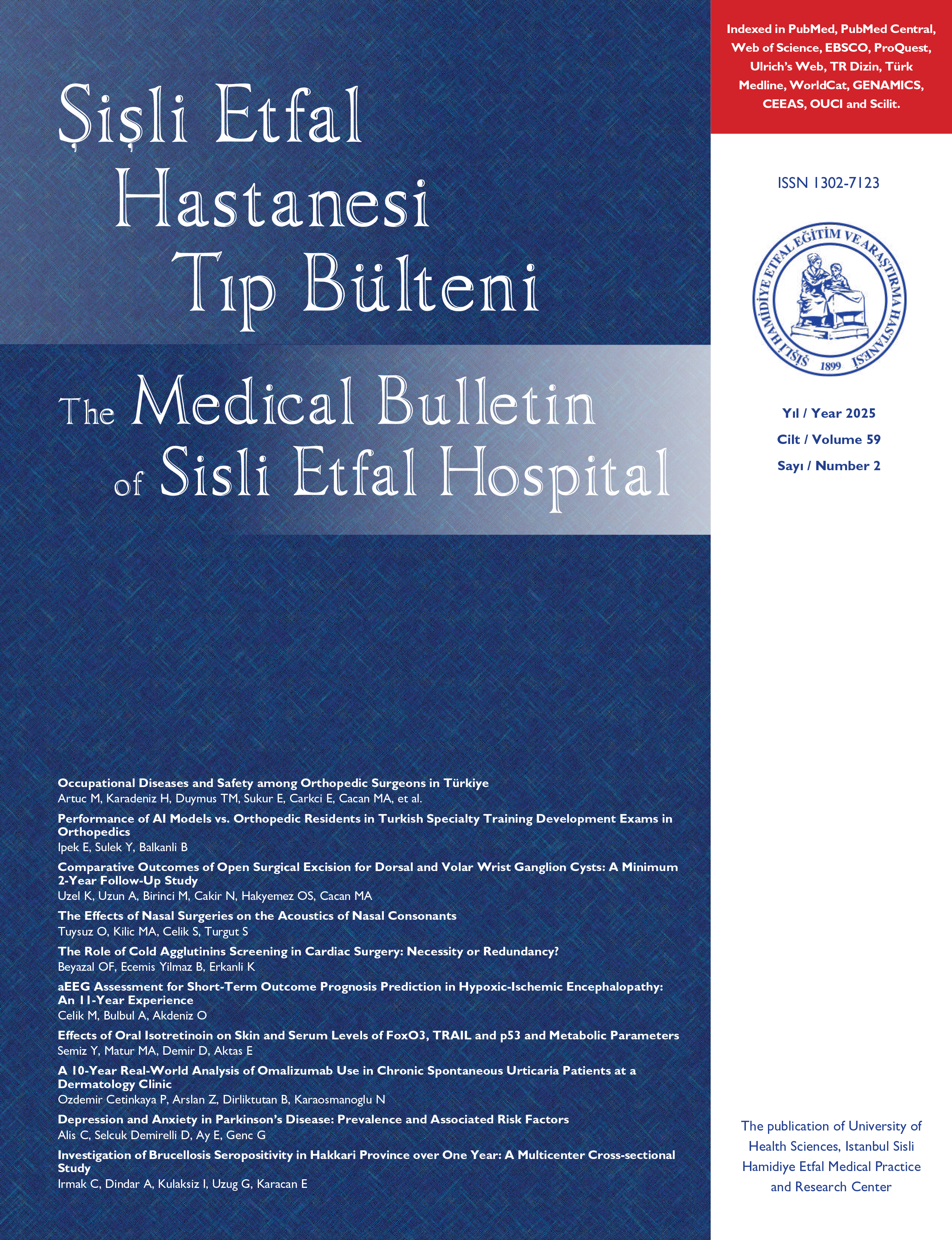
Can Active Surveillance be an Alternative to Surgery in Papillary Thyroid Microcarcinoma?: The Current Situation Worldwide
Nurcihan Aygün1, Adnan Işgör2, Mehmet Uludağ11Department of General Surgery, Health Sciences University, Şişli Hamidiye Etfal Training and Research Hospital, İstanbul, Turkey2Department of General Surgery, Bahcesehir University Faculty of Medicine, İstanbul, Turkey; Department of General Surgery, Şişli Memorial Hospital, Istanbul, Turkey
Papillary thyroid carcinoma (PTC) is the most common endocrine malignancy. Papillary thyroid microcarcinomas (PTMCs) are tumors in size of 1cm or less. The biological behaviour of these tumors differs due to the presence of their aggressive features. The prognosis of PTMCs with high-risk features such as clinical node metastasis, distant metastasis, and significant extrathyroidal extension to the tracheal or recurrent laryngeal nerve (RLN) invasion is poor, even the sufficient immediate surgery is performed at the diagnosis. However PTMCs without these aggressive features are low-risk tumors, because of their being indolent and slow growth behaviours. The increase in thyroid cancer incidence is mostly a result of overdiagnosis of small low-risk PTMCs with indolent clinical course. Despite the sudden increase in thyroid cancer incidence in the world, cancer mortality did not increase. Although the traditional treatment strategy for PTMC is immediate surgery at diagnosis, because of the rather low disease-specific mortality rate, low recurrence rate and potential risk for postoperative complications; active surveillance has been proposed as an alternative option for the PTMCs without invasion, metastasis or cytological or molecular characteristics, recently. The recent data support that active surveillance of low-risk PTMC should be the initial treatment modality, because only a small percentage of low-risk PTMCs show signs of progression and delayed surgery has not caused significant recurrence. However, recent management guidelines are shifting towards the more conservative treatments such as active surveillance. Although there is an increase in the number of studies related to active surveillance, prospective studies have been mostly from academic referral centers in Japan. The world is still in the need of class 1 evidence extended prospective studies originating from the different geographic regions. Active surveillance may be a good alternative to immediate surgery for appropriately selected patients with PTMC.
Anahtar Kelimeler: Active surveillance, papillary thyroid microcancer, immediate surgery
Can Active Surveillance be an Alternative to Surgery in Papillary Thyroid Microcarcinoma?: The Current Situation Worldwide
Nurcihan Aygün1, Adnan Işgör2, Mehmet Uludağ11Department of General Surgery, Health Sciences University, Şişli Hamidiye Etfal Training and Research Hospital, İstanbul, Turkey2Department of General Surgery, Bahcesehir University Faculty of Medicine, İstanbul, Turkey; Department of General Surgery, Şişli Memorial Hospital, Istanbul, Turkey
Papillary thyroid carcinoma is the most common endocrine malignancy. Papillary thyroid microcarcinomas (PTMCs) are tumors with a size of ≤1 cm. The biological behavior of these tumors differs due to the presence of their aggressive features. The prognosis of PTMCs with high-risk features, such as clinical node metastasis, distant metastasis, and significant extrathyroidal extension to the tracheal or recurrent laryngeal nerve invasion, is poor, even if a sufficient immediate surgery is performed at diagnosis. However, PTMCs without these aggressive features are low-risk tumors because of their indolent and slow growth behaviors. The increase in thyroid cancer incidence is mostly a result of overdiagnosis of small low-risk PTMCs with indolent clinical course. Despite the sudden increase in thyroid cancer incidence worldwide, cancer mortality did not increase. Although the traditional treatment strategy for PTMC is immediate surgery at diagnosis, because of the rather low disease-specific mortality rate, low recurrence rate, and potential risk for postoperative complications, active surveillance has been proposed recently as an alternative option for PTMCs without invasion, metastasis, or cytological or molecular characteristics. The recent data support that active surveillance of low-risk PTMC should be the initial treatment modality, because only a small percentage of low-risk PTMCs show signs of progression, and delayed surgery has not caused significant recurrence. However, recent management guidelines are shifting toward more conservative treatments, such as active surveillance. Although there is an increase in the number of studies related to active surveillance, prospective studies have been mostly from academic referral centers in Japan. The world still needs class 1 evidence extended prospective studies originating from different geographic regions. Active surveillance may be a good alternative to immediate surgery for appropriately selected patients with PTMC.
Keywords: Active surveillance, papillary thyroid microcancer, immediate surgery
Makale Dili: İngilizce



















